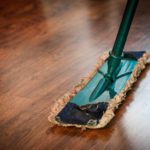Many people in the UK will have protected themselves against influenza this winter by opting for the ‘winter flu jab’. The vaccine, which is only made in the UK by the Liverpool-based firm Novartis, is produced in highly sterile clean rooms, in which HEPA-filtration, laminar air flow and other methods combine to ensure the end product is of utmost purity.
Around 30 million vials of vaccine are made every year in huge sterile clean rooms. These are then globally distributed. Vaccines have also been produced for commercial sale using a vertical laminar flow cabinet. In fact, the laminar flow booth is widely used by manufacturers to test the quality and sterility of vaccine batches before they are released for shipment, and also to research new vaccines which may be superior to those on the market. Currently, there are five companies producing the influenza vaccine worldwide; all of them harvest it using hens’ eggs, a traditional technique going back to the 1940’s. Influenza is a fast mutating virus, so it is essential the vaccines that fight it can be made equally quickly and reliably.
The laminar flow booth is sometimes referred to as a cell culture booth. Interestingly, Novartis recently began using cultured animal cells in place of chicken eggs, although problems like variable yields and delays in production remained. German scientists recently developed a vaccine made solely of messenger RNA (mRNA) that could be produced in just a few weeks. Laminar air flow technology offers the high levels of purity needed for cutting-edge research such as this.







Leave a Reply
You must be logged in to post a comment.